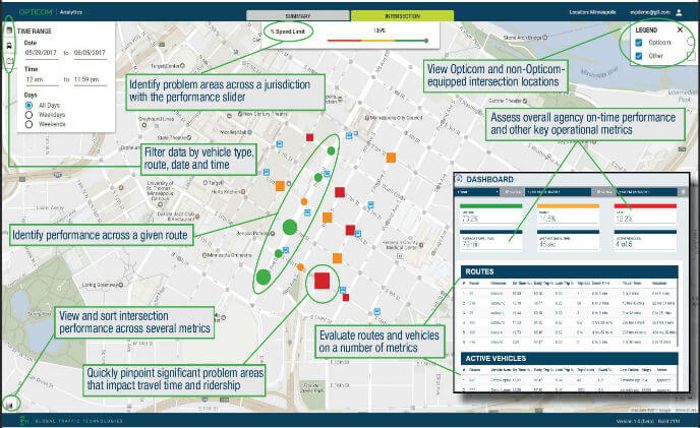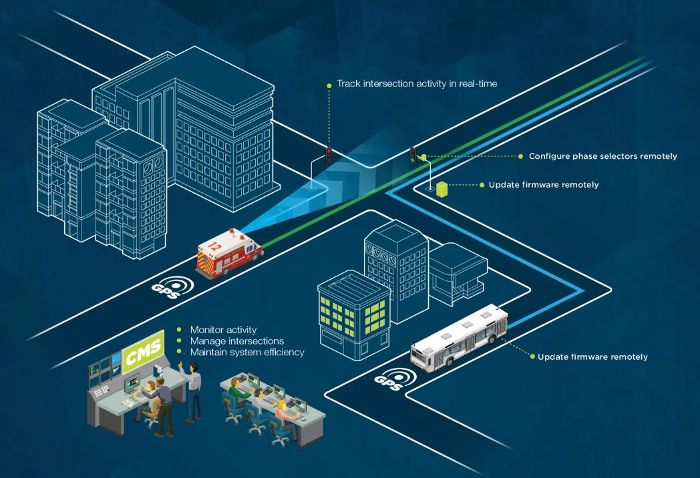A major smart mobility project in Montreal that uses a traffic light priority system from Minnesota-based Global Traffic Technologies (GTT) has won the Quebec Transportation Association’s (AQTr) 2019 Innovation Award.
Led by GTT, the project was one of the largest in the company’s history and provides a centralized intelligent traffic management platform to the City of Montreal. As part of the city’s mobility strategy, the system enables officials to oversee and control the movement of vehicles that operate on its streets.

GTT’s solution includes Transit Signal Priority (TSP) and Emergency Vehicle Preemption (EVP), and makes use of existing infrastructure and hardware in combination with innovative software to enable smart city initiatives such as improved mobility, decreased congestion, greenhouse gas reductions, increased safety and adaptive mobility management.
For the project, Montreal’s transit agency Société de transport de Montréal (STM) and the City of Montreal authorities partnered with GTT to develop a centralized intelligent traffic system that uses existing infrastructure to connect more than 2,700 intersections and nearly 1,900 vehicles.
The result is a flexible, software-based traffic signal priority system that can manage priority levels for both public transit and emergency vehicles. In the future, the system empowers Montreal to manage long-haul trucks, delivery vehicles, public works vehicles and even ridesharing services, such as Uber and Lyft, without any major infrastructure investments.
This latest innovation in smart city mobility merges features from industry-leading priority control systems deployed in Laval, Quebec and New York City, both built by GTT. The Montreal solution combines the conditional and relative Transit Signal Priority (TSP) features found in Laval with the centralized, software-based deployment used in New York. It gives the city the ability to reduce traffic congestion by giving priority to different users based on time-of-day, vehicle type, specific routes and direction of travel.
Outside the city’s central core, both public safety and public transit vehicles will be able to use existing point-to-point communications for priority control. Even vehicles from surrounding municipalities will be able to use the system, provided they have the necessary vehicle communications and if the City of Montreal has granted them access.

Throughout the entire system Montreal officials will be able to manage who gets different levels of priority, no matter the type of vehicle or where it came from. To ensure security, Montreal has the ability to approve access to users, while encryption ensures that unauthorized attempts at signal preemption are not allowed.
“This system gives the City of Montreal the power to manage and optimize mobility on its streets by moving calculations which are typically made on board the vehicles into a central location,” explained Victor Darias, GTT’s vice president of strategic sales for the region.
“In the case of transit priority, the Central Management Software considers lateness, passenger load and schedules when it allocates priority at an intersection. Once this is calculated, the system leverages existing infrastructure, including cellular and fiber networks, to send the priority decision to the intersections. Transit vehicles receive a green light only when they need it most.”





